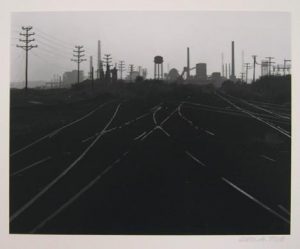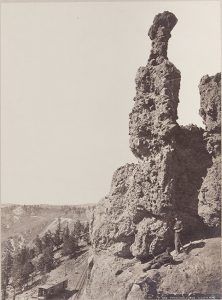
![]() Born in Newark, New Jersey, George Tice has spent six decades documenting his state’s built environment of urban and industrial places. Focusing on what he calls the “sad beauty” of decaying cities and industrial sites,” Tice draws our attention to the quotidian details of often overlooked places, chronicled in his 2002 book, Urban Landscapes. This body of work, begun in the 1960s, focuses on the built environment as a metaphor for identity, passing time, and the homogenization of the American landscape.
Born in Newark, New Jersey, George Tice has spent six decades documenting his state’s built environment of urban and industrial places. Focusing on what he calls the “sad beauty” of decaying cities and industrial sites,” Tice draws our attention to the quotidian details of often overlooked places, chronicled in his 2002 book, Urban Landscapes. This body of work, begun in the 1960s, focuses on the built environment as a metaphor for identity, passing time, and the homogenization of the American landscape.
Finding a sense of place in the built environment is essential to Tice. In an interview with Jean-Paul Caponigro in 1997, Tice observed: “I think New Jersey is rapidly changing; the landscape, its density, in the last ten years there’s 15,000 more cars on the road. It went through a big boom period of expansion, building office buildings and malls. The malls have killed many of the small towns. The main street is dying. Some are thriving but many are just getting by. There’s less and less of the local, there’s more of the big chains. Sometimes while traveling I can wake up in Connecticut and think I’m in New Jersey…. So I photograph what is essentially, characteristically New Jersey.”[footnote]Jean-Paul Caponigro, “George Tice,” July 1, 1997. http://www.johnpaulcaponigro.com/photographers/conversations/george-tice/Accessed March 10, 2017.[/footnote]

In this photograph of a rail yard, light glints on the tracks that lead our eye to a horizon of water tanks, smokestacks, and electrical wires. Compared to William Henry Jackson’s Phantom Curve, made nearly a century earlier, Tice’s scene lacks any references to the natural world. Instead, Tice offers a bleak commentary on a once-optimistic view of industry and transportation. Nevertheless, the subject is beautifully printed, with details emerging from the shadows and carefully controlled highlights.